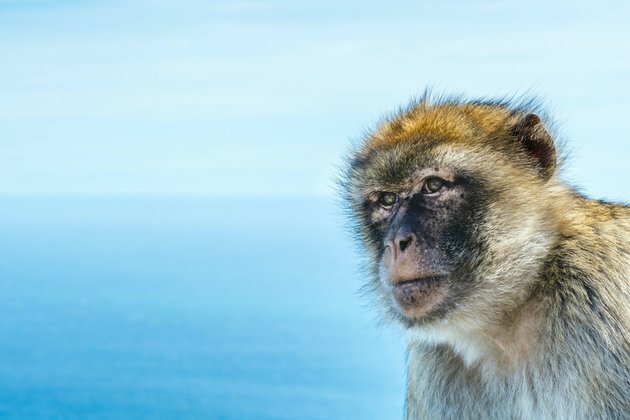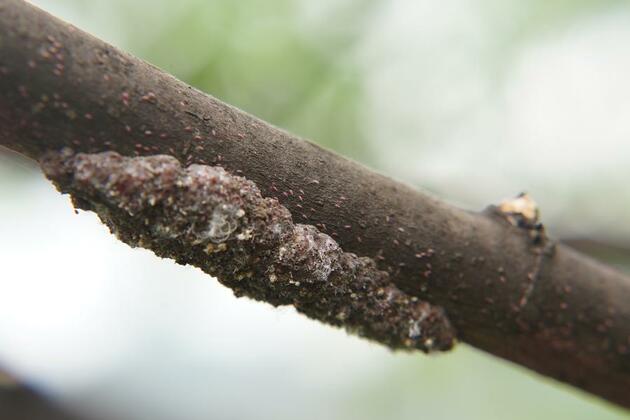Monkey teeth fossils hint several extinct species crossed the Atlantic
The Conversation
10 Apr 2020, 00:14 GMT+10

Most mammal fossils are visually unimpressive: a handful of teeth here and a fragment of bone there. Some are not even enough to identify the species they belonged to. But even a tiny fossil found in the right place can raise some really exciting questions about evolution.
In a new paper published in Science, an international team of researchers have described one such fascinating fossil, a set of monkey teeth from Peru. They belong to a species named Ucayalipithecus perdita (which we will call perdita). The name means "lost monkey of Ucayali".
Perdita comes from a family called the Parapithecidae whose members had previously never been found in the Americas. It has been dated to around 31.7 million years ago, and its closest relative was the roughly contemporary Qatrania wingi from Egypt. This suggests that perdita also most likely originally came from Africa.
This presents an obvious conundrum. How did monkeys so closely related come to be living as far apart as North Africa and South America, separated by 1,500-2,000 kilometres of ocean and significant tracts of land? The researchers, led by Professor Erik Seiffert at the University of Southern California, argue convincingly that the new fossils provide the first proof that there were multiple crossings of the Atlantic by ancient monkeys.
Scientists have actually been debating this issue for decades. Evolutionarily speaking, there are two possible explanations: vicariance and dispersal. Vicariance happens when a widespread species' range is fragmented by the appearance of a new barrier like a ravine or a river, while dispersal occurs when species migrate to colonise new lands.
Africa and South America once lay side-by-side as part of a supercontinent. Had monkeys been present, spread across it, then they would have been carried in different directions by the opening of the Atlantic. This would lead to divergence through vicariance. However, the initial opening of the Atlantic occurred between 180 million and 120 million years ago, and the origins of the monkeys are much more recent. This explanation is now not widely accepted.
Instead, we are left with the possibility of long-distance dispersal across an ocean. The presence of living South-Central American monkeys suggests it must have happened at least once. We can't be sure how, but one possibility is that a great storm might have ripped a chunk of vegetation from a coastal forest and transported it across the ocean. If this chunk had animal passengers, and if it moved fast, they might have survived to colonise new lands. This would, of course, be a very rare event, and even more rarely successful, though we do know it occurs occasionally today.
Perdita, as the oldest South American monkey, has potentially pushed the timing of this dispersal back a few million years. More importantly, it has also shown that it happened more than once.
The importance of tooth shape
The paper on perdita is mostly about the new species' anatomy, which the authors use to decide how it fits on its evolutionary tree. Monkey teeth are often studied to reconstruct relationships because they preserve well and differ between species.
The chewing surface of each tooth is covered in cusps (raised parts) and basins (dips) that give the tooth its distinctive shape. In the perdita paper, the authors compared their new fossil teeth with those of others from the same family and other living and extinct monkeys. We have modified one of their images to show just the molars in the lower jaw. Perdita is outlined in red, Egyptian teeth are outlined orange, and those in blue are from South-Central America.
The Egyptian teeth H and I (in orange) and those of perdita (J, in red) all have very pronounced cusps with small basins. If this were a landscape, it would be made up of a series of steep hills that sit tightly next to each other.
K (in orange) is also from Egypt, and L (in blue) is from Argentina. These teeth have fewer cusps joined by crests that form a deep basin in the centre. The landscape here is one of mountains with continuous ridges surrounding a deep valley.
These teeth from Egypt and Argentina belong to monkeys of a different family. The final tooth M (in blue) is from a living South-Central American monkey (all the others we have shown are from extinct ones). Comparing it to K and L shows the similarity between this living South American monkey and the two extinct ones. But clearly, perdita doesn't fit in this group.
In short, we have two groups of South-Central American monkeys, one containing perdita and the other all the remaining species. These two groups are only distantly related to each other. Instead, each of them has close relatives in Egypt. This means two distinct monkeys must have made the journey.
The implications for evolution
The implications are startling. Perdita would have reached the Americas at roughly the same time as the relatives of living South-Central American monkeys and co-existed with them.
This coexistence may have been challenging, as closely related species often compete. But perdita survived long enough to travel inland a long distance and became well enough established to leave fossils.
The fact that these two groups of monkeys dispersed roughly simultaneosuly is also surprising given the supposed rarity of long-distance dispersal. At about this time, the polar ice caps expanded and sea levels fell. This lowering of sea levels may have been important in facilitating rafting.
Finally, to have survived a long-distance crossing, perdita and contemporaries must have been hardy creatures. Perhaps, like living lemurs, they were physiologically adaptable to harsh environments. Or perhaps they relied on the behavioural flexibility that is so characteristic of living monkeys. However they managed it, surviving a transatlantic crossing suggests these species would have been extremely interesting animals.
Authors: Vivien Shaw - Lecturer in Anatomy, Bangor University | Isabelle Catherine Winder - Lecturer in Zoology, Bangor University 
 Share
Share
 Tweet
Tweet
 Share
Share
 Flip
Flip
 Email
Email
Watch latest videos
Subscribe and Follow
Get a daily dose of Greek Herald news through our daily email, its complimentary and keeps you fully up to date with world and business news as well.
News RELEASES
Publish news of your business, community or sports group, personnel appointments, major event and more by submitting a news release to Greek Herald.
More InformationInternational Business
SectionTrump re-ignites trade war, targets Europe in extraordinary attack
WASHINGTON, DC - U.S. President Donald Trump re-ignited his trade war on Friday with an extraordinary attack on the European Union...
60 financial institutions to participate in 'Ethraa' Career Fair
DUBAI, 28th May, 2025 (WAM) -- The Emirates Institute of Finance (EIF), in collaboration with the Central Bank of the UAE, the Emirati...
Sensex, Nifty open flat; FMCG, Metal and Consumer durables down, IT, PSU banks and Reality gains
New Delhi [India] May 28 (ANI): Indian stock markets on Wednesday opened flat despite a strong handover from the markets of the United...
University of Liverpool announces its first India campus in Bengaluru; Minister MB Patil says, "great leap forward for city"
Bengaluru (Karnataka) [India], May 27 (ANI): The University of Liverpool, part of the UK's prestigious Russell Group, on Tuesday marked...
"India and Kuwait have a 250-year-old partnership" Kuwait Heritage Society's president highlights exhibition 'Rihla-e-Dosti'
Kuwait city [Kuwait], May 27 (ANI): An exhibition, titled 'Rihla-e-dosti' celebrating 'over 250 years of friendship' between the regions...
"Joint working group set up between India and Kuwait to work against terrorism getting support": BJP MP Baijayant Panda
Kuwait City [Kuwait], May 27 (ANI): Bharatiya Janata Party (BJP) MP Baijayant Panda, leader of the Group-1 all-party delegation, on...
Mediterranean
SectionTrump re-ignites trade war, targets Europe in extraordinary attack
WASHINGTON, DC - U.S. President Donald Trump re-ignited his trade war on Friday with an extraordinary attack on the European Union...
Plans for European NATO troops in Ukraine seen as dead FT
The UK and France continue to strategize despite a lack of US support for the proposed mission Doubts are growing over a Franco-British...
French entrepreneur bullish on global prospects of SW China's shellac industry
KUNMING, May 28 (Xinhua) -- Yannick Benichou, a French national with a master's degree in nuclear energy from Tsinghua University,...
State-sponsored terrorism started from Pakistan: All-party delegation member MJ Akbar rips apart Pakistan
Paris [France], May 28 (ANI): Launching a scathing attack on Pakistan for promoting terrorism, former Union Minister of State, External...
All-party delegation led by BJP MP Ravi Shankar Prasad arrives in Rome after France visit
Rome [Italy], May 28 (ANI): An all-party delegation led by BJP MP Ravi Shankar Prasad has arrived in Rome, Italy, following the conclusion...
"Together with India in fight against terrorism": All party delegation member Ravi Shankar Prasad meets with India-France friendship group
Paris [France], May 28 (ANI): The all-party delegation led by Bharatiya Janata Party (BJP) MP Ravi Shankar Prasad met with the president...












